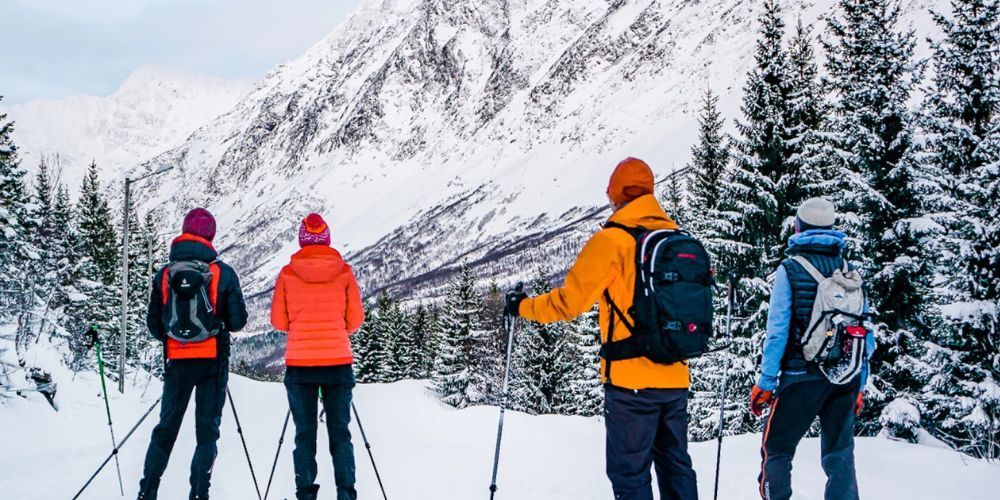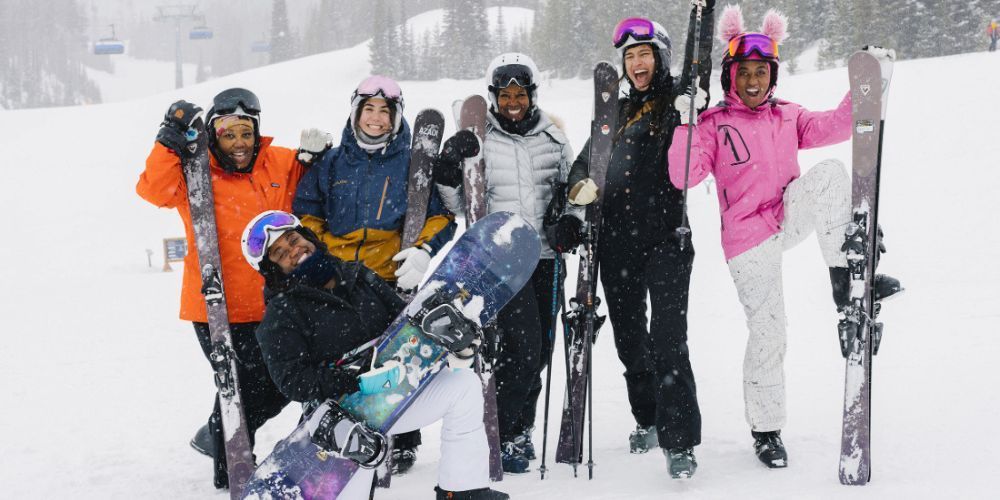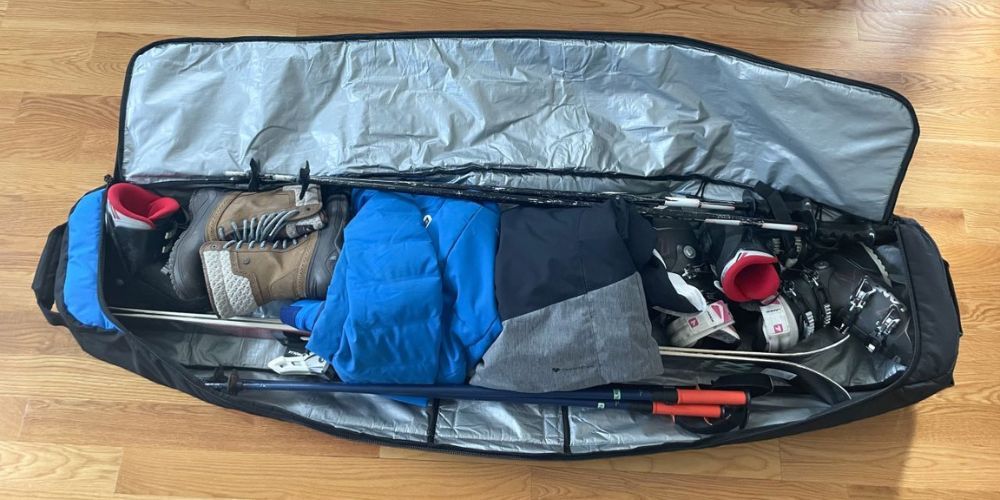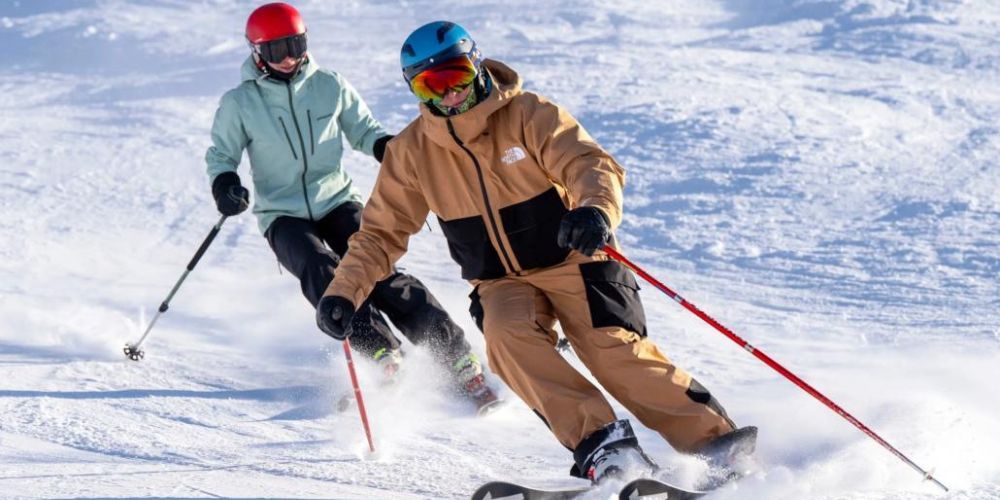William Flaiz is a lifelong athlete and outdoor enthusiast with a deep passion for adventure and sports. With over two decades of experience competing in marathons, triathlons, adventure races, and a wide range of recreational activities, William brings a wealth of knowledge to Sports and Nature Gear. Having explored 49 U.S. states and over 25 national parks, his extensive travels and hands-on experience with gear and gadgets provide readers with practical, expert advice for their own outdoor adventures. Whether it’s running, biking, kayaking, or hiking, William’s insights are invaluable to anyone looking to enhance their experience in the great outdoors. Read his full bio.
Ski Boots: The Ultimate Buying Guide for the Best Options
A pair of comfortable, high-performing ski boots can transform your day on the slopes. The right fit not only enhances your control but also ensures you enjoy every moment without feeling sore or fatigued. Imagine gliding down a powdery slope with precision, all due to well-chosen boots that cater specifically to your skiing style. This transformation isn’t just about picking any boot off the shelf—it requires knowledge about different types, fit considerations, and material properties.
After researching countless sources, reviews, and expert opinions, we've gathered pivotal information that will guide you in selecting ski boots tailored to your needs. Even subtle differences in design considerably impact comfort and performance. Understanding these nuances will help you make an informed choice, turning potential hours of discomfort into seamless skiing joy. Now let's explore what makes each type of ski boot unique for various styles and terrains.
When buying ski boots, you should consider factors such as your skiing style (alpine, touring, or freestyle), the flex index of the boots for comfort and control, proper sizing for a snug fit with some toe wiggle room, and the width of the boot's forefoot. Additionally, ensure that the boots offer necessary features like insulation, secure buckles, and compatibility with your bindings to optimize your skiing experience.
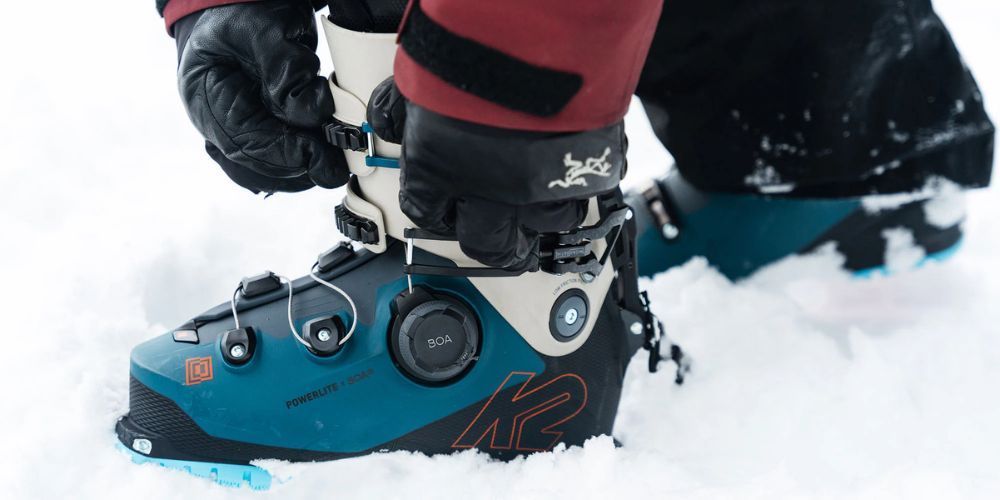
Selecting the Right Ski Boots
The right fit is paramount when it comes to ski boots; a properly fitted boot can make the difference between an enjoyable day on the mountain and one filled with discomfort and potential injury. To start, ensure that the size of the boot corresponds appropriately to your foot length, generally measured in millimeters. Most brands provide sizing charts to help guide you through this process. A snug fit is key, as it prevents unnecessary movement inside the boot and ensures better control during turns.
Keep in mind that while you want a tight fit, your toes should just barely touch the front of the boot without feeling cramped; once you're standing upright, they should pull back slightly from the toe cap.
In addition to size, pay close attention to last width, which refers to the width of your boot at its forefoot. Ski boots are typically categorized as narrow, standard, or wide, and selecting one that matches your foot shape will greatly enhance comfort and performance. For those with wider feet, opting for boots labeled as "wide" or "super wide" can alleviate pressure points that might lead to fatigue during long skiing sessions.
Properly fitting ski boots not only enhance comfort but also boost overall performance by providing precise feedback from your skis.
Additionally, consider the flex index of the boots—this measures how stiff or soft a boot is and can greatly affect responsiveness and control. A softer boot may be more forgiving for beginners and casual skiers, allowing for easier maneuverability. In contrast, advanced skiers often prefer stiffer boots which provide better control at high speeds and across variable terrain. Most flex ratings range between 50 (soft) to over 130 (very stiff), helping you find a balance between comfort and support based on your skill level.
Beyond fit, remember that personalization enhances both functionality and comfort; consider customizable features when selecting ski boots.
Customization Options
Customization options such as heat-moldable liners allow for a personalized fit tailored exactly to the contours of your feet. Many retailers offer this service on-site where they will fit your liners in a heated oven, allowing them to mold precisely around your foot's shape. This can significantly enhance warmth and comfort during cold days on the slopes.
Another feature to look out for is adjustable buckles or power straps that give users more control over how tightly or loosely they want their boots fitted. These adjustments can be fine-tuned based on varying conditions throughout the day—tightening them for better performance on steep runs and loosening them for easier walking in lift lines or après-ski activities.
Lastly, don't overlook trying on multiple models; different brands may feel completely different even if they share similar specs on paper. Transitioning into how these various elements contribute to deciding on ski gear will ensure you're well-prepared before hitting those snowy slopes.
Fit and Comfort Considerations
When it comes to ski boots, comfort truly isn't just a luxury—it's a necessity. A proper fit directly affects your skiing experience from the moment you strap in until you glide down the slopes. Without a snug yet comfortable fit, even the most advanced technology in your boots may become irrelevant if you're grimacing with each turn or trying to relieve painful pressure points.
Proper Fit Guidelines
Start by determining how the boots feel when you first try them on. First and foremost, Initial Fit is crucial. Always wear your regular ski socks to replicate the conditions you'll be using them in.
When you stand straight, your toes should gently touch the front of the boot; however, as you flex your knees into a skiing position, your toes will slide back slightly away from the front, allowing wiggle room while preventing pinching. This initial assessment helps gauge how well they align with your foot's anatomy.
After assessing the initial fit, move on to what is known as the Shell Fit Test. This requires removing the inner liner of the boot to check how it feels against your foot in its shell. Slide your foot inside and press your heel down firmly; you should have 1–2 centimeters of space behind your heel for a secure fit without feeling overly tight. This test is essential because it allows for accurate sizing—too little space can lead to discomfort on the mountain while too much can hinder control and responsiveness.
Navigating through various options can be overwhelming, but remember that small details matter significantly! Good insoles can revolutionize how ski boots feel on your feet.
Speaking of insoles, Insole Factors are another pivotal aspect to consider. A quality insole or custom footbed provides much-needed arch support and can drastically change how fatigue builds during long days on the slopes. Custom footbeds mold to your individual arches and foot shape, elevating comfort levels while enhancing stability and control. It might seem like an additional cost at first glance, but investing in customized support can pay off with more enjoyable skiing outings.
As you implement these fitting techniques, remember that comfort isn’t solely about snugness; it's also influenced by the selection of materials and construction that enhance overall enjoyment on the slopes.
Materials and Construction
At the heart of a ski boot's performance lies its materials and construction methods. These elements determine not just how long the boots will last but also how well they perform under pressure on the mountain. The choice often comes down to two primary materials: polyurethane (PU) and Pebax. PU is widely recognized for its robustness and versatility, maintaining flexibility across varying temperatures. This means whether it's a chilly morning or the heat of mid-afternoon, your boots can adapt without compromising performance. On the other hand, Pebax shines in high-performance settings; while it’s lighter, it's also pricier and typically reserved for specialized boots aimed at experienced skiers or backcountry touring.
For instance, if you're considering a rugged day on mixed terrain, opting for a boot shell made of PU might give you peace of mind regarding durability. However, if you're keen on speed and agility during competitive runs, investing in a Pebax option could pay off—particularly when every ounce matters.
Boot Shell Durability
Another critical component of your ski boot's design is its shell durability. Look for features such as reinforced areas that can withstand impact; after all, skiing often puts gear through rigorous trials. Some manufacturers have integrated unique layering techniques that enhance both protection and flexibility, ensuring your boots hold up against wear while performing effortlessly on the slopes.
Now let us move into liners—the unsung heroes of ski boots. The inner liner significantly contributes to comfort and fit while influencing heat retention during cold days on the mountain.
Liner Materials and Heat-Molding
When you’re shopping for ski boots, keep an eye out for options with heat-moldable liners crafted from EVA foam. The beauty of this technology lies in its ability to conform to your foot's specific shape through a straightforward heating process usually done at a reputable ski shop. By doing so, these liners provide excellent comfort and responsiveness paired with a snug fit—translating to better connection with your skis.
Custom fitting through heat molding can take only a few minutes but results in a noticeable improvement in comfort and control.
As we continue exploring essential features that influence your skiing experience, it’s important to recognize how each material choice interplays with performance elements that enhance your time on the snow.
Performance Enhancing Features
One of the key performance-enhancing features of modern ski boots is the flex index. The flex index is a numerical value that dictates how stiff or soft a boot feels. Generally, if you're an advanced skier looking for responsive control on challenging terrain, you'll want boots with a higher flex index ranging between 100-130. Conversely, beginners may find greater comfort in softer options, typically falling within the 60-90 range, allowing for easier maneuverability while they develop their skills and confidence on the slopes. It's critical to align your choice with your skill level and skiing goals, as it affects not just performance but comfort over long periods.
Another innovative feature that enhances your skiing experience is the ski/walk mode.
The ski/walk mode function is especially practical for those venturing into backcountry skiing or those who need to navigate between different terrains. This toggle allows you to switch effortlessly between walking and skiing modes; in walk mode, the cuff of the boot loosens to create more flexibility and mobility, making it easy to hike, traverse or relax during breaks. When you’re ready to ski, switching back to ski mode provides the necessary rigidity for control during descents. It's a perfect blend of utility and performance that modern skiers appreciate.
Aside from flex index and ski/walk modes, buckle systems also play a pivotal role in fitting and performance.
Advanced buckle systems significantly enhance fit accuracy and comfort through micro-adjustments. These systems allow skiers to fine-tune their boot's tightness with precision, ensuring that each part of the foot is securely held while avoiding pressure points that could lead to discomfort or pain on longer runs. Look for models equipped with durable aluminium buckles—they tend to be more robust than plastic alternatives—and ensure that they feature precision locking mechanisms as this not only improves functionality but also prolongs the life of your boots by minimizing wear and tear over time.
Each of these features works synergistically to enhance both your comfort and performance out on the slopes, highlighting how essential it is to choose ski boots tailored to meet your unique requirements. Transitioning now explores additional elements that influence equipment selection for varied weather conditions.
Climate Adaptability Factors
When you think about hitting the slopes, it's not just about the thrill of skiing; it's also about being prepared for whatever Mother Nature throws your way. Ski boots can greatly influence your experience, especially when environmental factors like temperature and moisture come into play. Choosing ski boots that are adaptable to different climates means understanding features that can keep your feet warm, dry, and comfortable across a spectrum of skiing conditions.
Insulation
Insulation is a key factor when selecting ski boots, particularly if you often find yourself skiing in frigid temperatures. Look for options featuring Thinsulate or Primaloft insulation, which deliver warmth without excessive bulk. This lightweight warming technology traps heat while still allowing flexibility and movement—essential for an enjoyable skiing experience. Conversely, if you're navigating milder slopes or spring skiing where temperatures are more forgiving, less insulation may actually benefit you by preventing overheating.
Remember, a boot that feels overly warm can lead to discomfort and fatigue during long days on the mountain, so it’s crucial to gauge your typical skiing environment when making this decision.
Waterproofing
There is a common debate among skiers regarding waterproofing: Some assert that all ski boots provide adequate protection against moisture; however, high-end models equipped with Gore-Tex liners showcase superior waterproof capabilities along with breathability. This feature becomes especially vital if you're challenging fresh powder or facing wet, heavy snow. Moisture can creep into your boots and make your entire day miserable if you’re not adequately protected.
One insider tip is to examine how the seams are constructed in the boot design. Seam-sealed boots offer additional moisture protection, further enhancing your safety from cold and damp conditions. Investing in a quality pair of ski boots with high waterproof ratings pays off by keeping your feet dry and cozy throughout your adventures.
Understanding how these various factors interplay with weather conditions and your personal skiing style is essential for making an informed gear purchase. As we move forward, let's take a closer look at specific options tailored to varying skill levels in the sport.
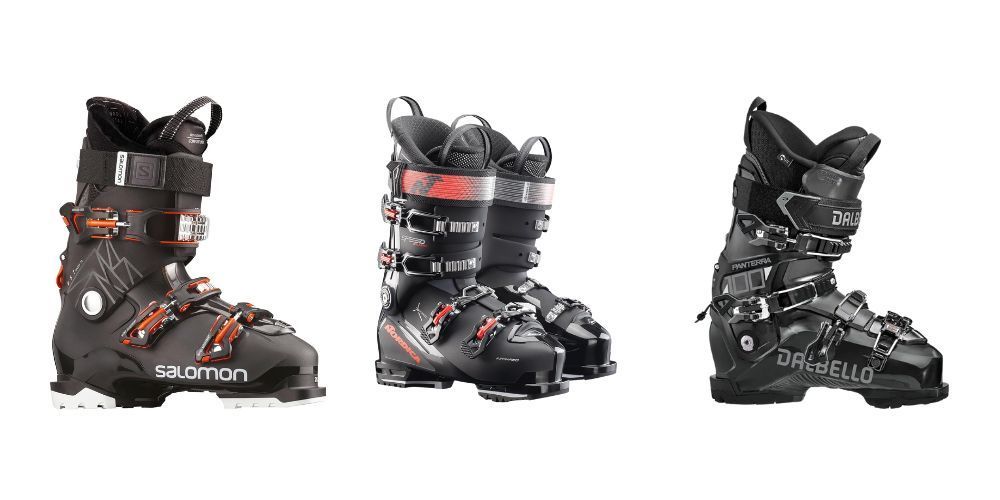
Best Ski Boots for Different Levels
When it comes to selecting ski boots, your skiing ability and experience level significantly influence the type of boot that's best suited for you. Each level has specific needs that these boots cater to, so knowing which ones to consider can enhance your performance on the slopes.
Beginners
For those just starting out, comfort and control are paramount. The Salomon QST Access (Men's 80 & Women's 70) stands out as an excellent choice. With a soft flex, these boots provide the forgiving nature that novice skiers need, allowing them to learn without feeling overwhelmed by their equipment.
At a price point between $300 and $400, they offer quality without breaking the bank, making them ideal for new skiers who might not want to invest heavily before fully committing to the sport.
As you develop your skills and begin to tackle more challenging runs, your boot requirements will change.
Intermediate Skiers
Dalbello Panterra: This boot shines in its customization options, fitting snugly around your foot for enhanced control while providing medium flex that balances stiffness with comfort.
Nordica Speedmachine 110: Known for its versatility, it delivers a harmonious blend of performance and comfort, helping you build confidence as you progress.
These options cater well to intermediate skiers who seek a balance between maneuverability and support, allowing them to explore varied terrain with a touch of stability.
However, once you’ve mastered those skills and crave more precision and responsiveness from your gear, it's time to explore advanced options.
Advanced/Expert Skiers
For seasoned skiers tackling aggressive runs, the Tecnica Mach 1 MV 120 is worth serious consideration. Built for high performance, these boots offer substantial flex and responsiveness, enabling you to carve through powder or navigate difficult terrain with ease.
However, you should expect to pay around $700 for this level of performance—worth it if you're pushing limits on the slopes.
Selecting boots that align with your ability level ultimately leads to better control and enjoyment on the mountain. By choosing boots tailored specifically for beginners, intermediates, and experts alike, you'll find yourself progressing faster and enhancing your technique while ensuring safety on every run.
Now that we've explored various options based on skill levels, let's look at some standout choices in ski boots that can elevate your performance even further.
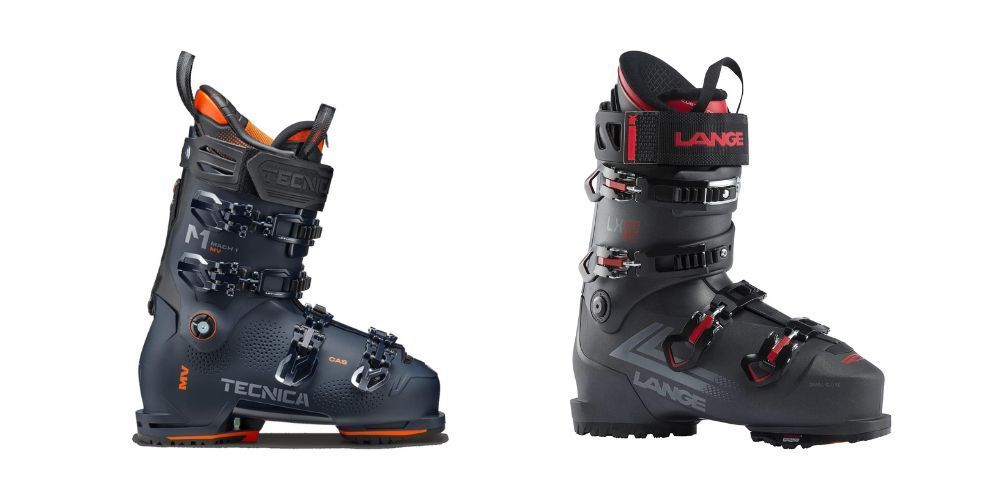
Top Ski Boot Recommendations
When we consider the best options in ski boots, three particular models frequently emerge as top contenders in 2024, and for good reason. Each model caters to different skiing styles while ensuring comfort, performance, and affordability.
Best Overall: Tecnica Mach 1
The Tecnica Mach 1 has become the go-to option for serious skiers. Its blend of comfort and high-performance features, such as a warm T-Drive liner, makes it especially popular. With a flex range up to 130, this model is designed for advanced skiers who need reliable support during their runs. Its price point around $700 reflects durability and efficiency, making it a worthy investment for those who spend significant time on the slopes.
"Comfort shouldn’t be sacrificed for performance when choosing ski boots; and with the Tecnica Mach 1, you don't have to," many satisfied customers share in their reviews.
Best Budget Option: Dalbello Panterra
For those wary of spending top dollar on gear, the Dalbello Panterra is an excellent budget-friendly option. Priced at a reasonable $400, these boots do not skimp on essential features. They come equipped with adjustable flex to cater to various skiing abilities and provide an overall comfortable fit for casual skiers. This fusion of functionality and affordability ensures that you don’t have to break the bank while still enjoying quality gear.
Many users appreciate this model's balance between cost and performance, emphasizing how it meets their needs without excessive financial stress.
Best for Wide Feet: Lange LX 120
If you struggle with finding suitable footwear due to wider feet, then Lange LX 120 might just be your ideal choice. Specifically crafted for men with broader foot dimensions, these boots ensure a snug fit while maintaining exceptional control on the slopes. Priced at approximately $600, they deliver both comfort and impressive performance across various winter conditions.
By understanding these recommendations, you can see that each offers something unique while encompassing essential features that enhance your skiing experience. Knowing what’s available is crucial—but equally important is purchasing your ski boots at the right time to maximize your investment.
In summary, identifying the right pair of ski boots tailored to your needs will significantly improve your skiing experience this season. Equip yourself wisely and enjoy the slopes!
AUTHOR
Nature's Playbook
As an Amazon Associate I earn from qualifying purchases.





